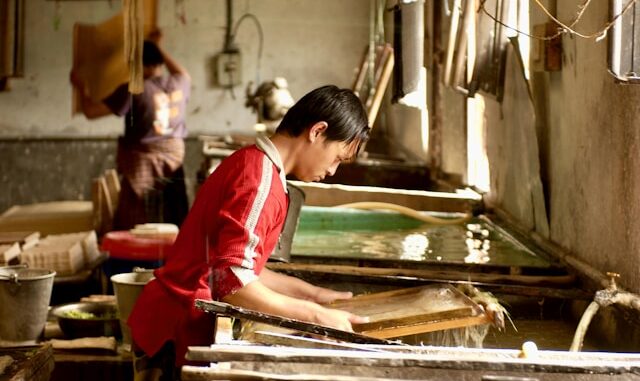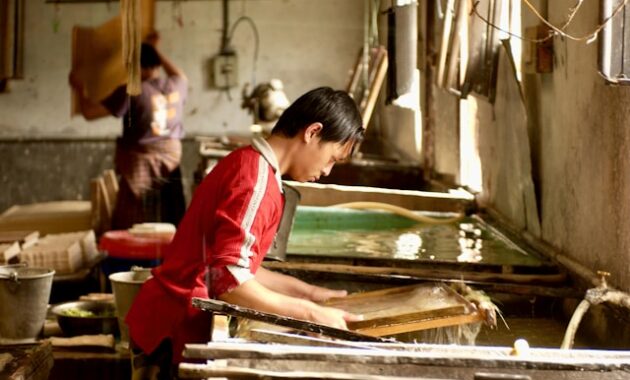
Understanding Bhutan’s Unique Cultural Identity
Nestled in the eastern Himalayas, Bhutan is a country unlike any other. Governed by the philosophy of Gross National Happiness, it balances tradition with modernity, spiritual depth with everyday practicality. To truly experience Bhutan, one must delve deep into the daily life of its people, which offers a rare blend of serene spirituality, vibrant tradition, and harmonious community living.
Bhutan’s culture is profoundly influenced by Vajrayana Buddhism, which shapes not only the religious beliefs but also the lifestyle, art, architecture, and even governance. From the fluttering prayer flags atop rugged cliffs to monks chanting in majestic dzongs, every facet of life reflects a devotion to peace and balance.
Traditional Bhutanese Homes and Architecture
One of the most striking aspects of Bhutanese daily life is the distinct architecture. Most homes are constructed from stone, mud, and wood, featuring intricate wooden cornices, sloped roofs, and no nails. These homes are typically large and built to accommodate extended families under one roof, fostering a strong sense of community.
Inside, homes are adorned with Buddhist altars, painted wall murals, and handcrafted textiles. Firewood stovesremain a central feature in rural homes, used for both heating and cooking. In urban areas like Thimphu or Paro, modern conveniences blend with traditional aesthetics, showcasing Bhutan’s careful approach to modernization.
Bhutanese Cuisine: A Glimpse into Daily Eating Habits
Daily life in Bhutan cannot be fully appreciated without exploring its rich culinary culture. The national dish, Ema Datshi, is a spicy stew made of chili peppers and cheese—served at almost every meal. Chilies are not considered a spice but a vegetable in Bhutanese cuisine, often dominating the plate.
Meals typically consist of red rice, steamed vegetables, and hearty meat dishes, especially pork and beef. In rural regions, butter tea (Suja) and Ara (local distilled spirit) are commonly consumed. Eating is often communal, and meals are enjoyed in a relaxed, familial setting.
Community and Family Life in Bhutan

In Bhutanese society, community and family bonds are deeply cherished. Villages operate as tightly knit communities where people help one another with farming, construction, and festivals. Elderly members are respected and play an active role in raising children and preserving traditions.
It’s common to see multi-generational families living together, especially in rural areas. Children are taught from a young age to participate in household chores and community activities, instilling a sense of responsibility and cultural pride.
A Day in the Life of a Bhutanese Farmer
Approximately 60% of Bhutan’s population is involved in agriculture, making farming a cornerstone of daily life. A typical farmer’s day begins at dawn, working the terraced fields that contour the mountainous landscape. Rice, maize, potatoes, and vegetables are grown organically, reflecting Bhutan’s commitment to sustainable farming.
Livestock, such as yaks and cattle, are vital, providing milk, cheese, and labor. Farmers often rotate crops and use traditional methods handed down through generations, emphasizing harmony with nature.
Religion and Rituals: A Spiritual Foundation
Religion plays a central role in Bhutanese life. From monks in maroon robes walking the streets to laypeople spinning prayer wheels, daily life is steeped in spiritual practice. It’s customary for Bhutanese to visit monasteries, light butter lamps, or make pilgrimages to sacred sites.
Most homes have a Buddhist shrine where family members pray daily. Religious festivals known as Tsechus, held in dzongs across the country, are vital social and spiritual events filled with masked dances, music, and blessings. These rituals are not mere spectacles; they are part of the living fabric of Bhutanese identity.
Education and the Role of Monasteries
Bhutan’s education system reflects a blend of modern academics and monastic teachings. Government schools offer free education, often with English as the medium of instruction. Alongside this, monasteries function as spiritual schools, where young boys—some as young as five—are ordained as monks and study Buddhist scriptures, meditation, and rituals.
This dual approach to education ensures that traditional values and modern knowledge go hand in hand, preparing Bhutanese youth to navigate the future while staying rooted in their heritage.
Dress Code and National Pride
The traditional dress—Gho for men and Kira for women—is more than a cultural relic; it’s a legal requirement in schools, government offices, and formal gatherings. These garments are elegant and functional, often accessorized with a kabney (scarf) or rachu depending on social status.
Wearing traditional dress is a source of national pride, promoting unity and a visible cultural identity. Visitors often admire how Bhutanese people, especially the youth, wear these outfits with pride and style.
Local Economy and Artisan Crafts
Bhutan’s economy is modest but self-reliant, with a growing focus on sustainable development. Many Bhutanese supplement their incomes through artisan crafts such as weaving, wood carving, and thangka painting. These crafts are not just economic activities but are also expressions of Bhutan’s cultural heritage.
Markets in towns like Punakha and Bumthang are rich with handmade textiles, paper, incense, and jewelry. Supporting these artisans helps preserve ancient techniques and sustain local livelihoods.
Technology and Modern Life in Bhutan
Though Bhutan remains deeply traditional, technology has made its way into daily life. Internet connectivity is widespread in urban centers, and smartphones are common among the younger generation. Social media is used to share religious quotes, community news, and even agricultural tips.
However, Bhutan has avoided over-commercialization. Television was only introduced in 1999, and advertising is still rare. This has helped preserve cultural integrity while embracing the benefits of modern communication.
Festivals: The Heartbeat of Social Life
Bhutanese festivals, or Tsechus, are integral to the spiritual and social calendar. Held in major towns and remote villages alike, these vibrant events bring communities together in celebration and prayer. Monks perform ritual dances in elaborate masks and robes, believed to confer blessings and protect from misfortune.
Families travel long distances to attend, often camping out and sharing food. Tourists are welcome but must respect the solemn nature of these religious occasions. Participating in a Tsechu offers an authentic glimpse into Bhutanese lifeand the deep spiritual connection that defines it.
Tips for Travelers: Respecting Local Norms
When traveling in Bhutan, it’s important to respect local customs. Always ask before photographing people or religious sites. Dress modestly, especially when visiting temples or dzongs. Removing shoes before entering sacred spaces is a must.
Try to engage with locals—they are friendly, curious, and eager to share their culture. Learning a few words in Dzongkha, Bhutan’s official language, can go a long way in forging connections.
Bhutan operates on a high-value, low-impact tourism model, requiring travelers to book through licensed tour operators and pay a daily fee that covers accommodation, meals, and a guide. This ensures tourism remains sustainable and beneficial to local communities.
Conclusion
Daily life in Bhutan is a unique blend of spirituality, tradition, and simplicity. It’s a place where modernity walks gently alongside ancient customs, and where community, compassion, and contentment reign. For travelers seeking not just sightseeing but soul-seeing, immersing in local life in Bhutan is a journey like no other.